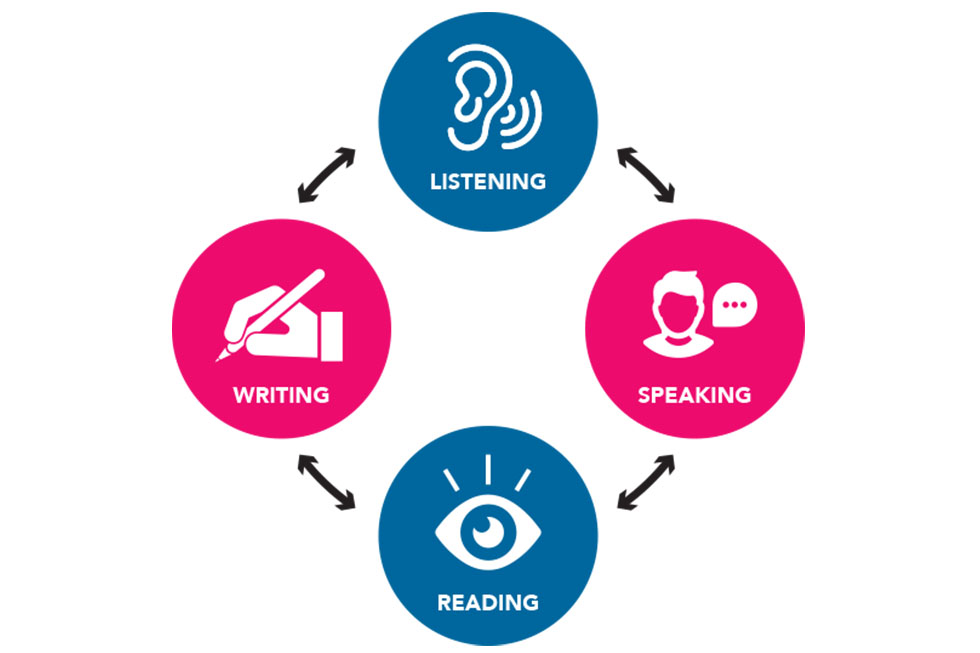What is assessing and what is evaluating?
To start with this blog, we all should be clear in what is assessing, what is evaluation, and the differences between them. According to the Online Assessment Tool website, assessment is " the systematic process of documenting and using empirical data to measure knowledge, skills, attitudes, and beliefs." and evaluation " focuses on grades and might reflect classroom components other than course content and mastery level." Just by reading the definitions, you can spot the general differences between each other, but are there any other differences? and what do they have in common? There are many differences that we can see between assessment and evaluation; one of them is that the assessment is a process-oriented action, and the evaluation is a product-oriented action which means we take into account the result of what we were trying to have the students do or learn. They both require a time of observation in which we need to gather some evidence so you can be able to get your answer and measure properly your objectives.
As we already know, in English there are 4 basic skills that we need to conquer in order to have a successful domain of the language. These skills are listening, speaking, reading, and writing. Each of these skills should be asses in a different way depending on the student's level, age, cultural background, and others.

Assessing listening
It is hard to say that we will find just a listening test or practice because it has always been considered part of speaking. If we want to center just on the listening skill we sure can have tests especially for it but they are not that common. There are different types of listening:
- “Intensive: listening for the perception of the content (phonemes, words, intonation)”
- “Responsive: listening to a short stretch of language to give a short response.”
- “Selective: processing stretches of discourse….to be able to comprehend designated information…”
- “Extensive: listening to develop a top-down, global understanding of spoken language….”

- Imitative: “…the ability to simply parrot back (imitate)…” Some tasks that can be used to assess imitative speaking can be read aloud, or repetition tasks.
- Intensive: “…the production of short stretches of oral language designed to demonstrate competence…” There different types of tasks that can be used to assess intensive speaking; read aloud task, directed response tasks, completion tasks, and oral questionnaires.
- Responsive: “responsive assessment task includes interaction and test comprehension but at somewhat limited levels of very short conversations.”
- Interactive: the conversation is longer than the responsive ones. Tasks that can help us assess the interactive speaking ways include an interview, role-play, discussions, and conversations, games (“such as Tinkertoy, crossword puzzles, maps, and information gap grids.
- Extensive: “extensive oral production tasks include speeches, oral presentations, and story-telling…” The tasks we can design to assess extensive speaking can be oral presentations, picture- cued story-telling: (“Consists of making students speak through the figure and evaluate their capacity”); translation.
Assessing reading
There are different types of reading which are selective, interactive, and extensive. Selective reading is the type of reading in which the reader focuses on the formal aspects of the texts, including the lexical part and grammar. To assess this type of reading we can present to the students multiple choices, matching tasks, editing tasks, and even gap-filling practices. We also have the interactive reading which focuses on the meaning of what is being read; texts are usually larger. To assess this type of reading we can give the students cloze tasks or reading comprehension tests. Last but not least, there is extensive reading, this one includes even larger tests like journal articles, technical reports, and long essays. We can give to the students impromptu reading to evaluate their abilities, short answer tasks, editing task, and even task in which they have to scan the text.
Assessing Writing
If we travel to the past and bring anyone into the future, that person would be impressed with the way that writing has been a part of our daily lives. Many years ago the main form of communication was oral; only a few scholars were capable of writing in the past, but step by step, it started to change in a way that writing was introduced in our daily lives. Now we see it in all areas from the newspaper to when we are going to do a business meeting. So taking that as a reference we cannot believe that writing is simply writing; nowadays there are rules, structures, symbols, and punctuation marks that should be applied. That is why when we talk about assessing, writing is a fairly broad topic and there are different ways in which we can evaluate, for example, we have to assess the students handwriting ability, the correct spelling, the right grammatical sequence in sentences, paragraph construction and logical development of the main idea, etc. Each of these points can be assessed through a variety of tasks, questions, formative tests, and activities.
Types of tests
From the beginning, men have wanted to have a position in all the areas in which we have found ourselves throughout history. It is interesting for us to know who is the person with the most money, the hamburger chain that has made the most hamburgers in the world or even the fattest or oldest person in the world. When we go to the field of education, it is there that we find the test, but what is a test?
In education, a test is a tool that helps us to be able to measure the level of the learners in terms of their knowledge or abilities in a certain subject. There are many types of tests in education, and each one of them is used depending on what you want to evaluate in your student. For example, if I am teaching English grammar, a good test would be to place sentences giving multiple options with incorrect answers, but always having a correct one for them to choose and in this way measure their knowledge on the subject.
What is Evaluation?
Evaluation is all the techniques, methods, mechanisms, tools that teachers use to be able to diagnose or measure knowledge in a subject with real numbers and statistics.
Grading and students evaluation
As always said from the beginning of history, it has always been necessary for us, human beings, to be able to measure. Not only our knowledge but our stature, our social position, our money in the bank, etc, but in education, it is a little different. Why? Since there are several topics in education and usually one topic precedes the other (we go from easy to complex). Therefore, if we do not have a number, a real statistic through an evaluation that tells us that the students really learned to add, we should not teach them to multiply. Then when we already have the result that the students know how to add, we can move towards the next topic. and here is the importance of grading and evaluation.
- Brown H.D. (2003) Language Assessment: Principles and Classroom Practices.
- Insyde Webdesign. (2020, July 22). Assessment vs Evaluation in education | Onlineassessmenttool.com. Self Publishing School. https://www.onlineassessmenttool.com/knowledge-center/assessment-knowledge-center/assessment-vs-evaluation/item10642#:%7E:text=is%20an%20assessment%3F-,Assessment%20is%20the%20systematic%20process%20of%20documenting%20and%20using%20empirical,course%20content%20and%20mastery%20level.
- S, S. (2017, October 21). Difference Between Assessment and Evaluation (with Comparison Chart). Key Differences. https://keydifferences.com/difference-between-assessment-and-evaluation.html
Created by: Amelie Elliott, Abigail Hernandez, and Robert Armas



Interesting disclosure, well done!
ResponderEliminarThank you very much!
Eliminar